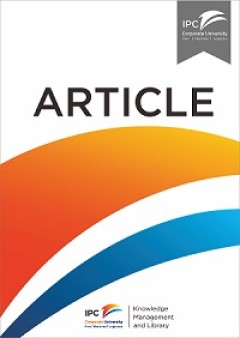Ditapis dengan

Time compression in the supply chain
Claims that time compression is a powerful source of competitive advantage that remains relatively underutilized in UK busineses. Details the research undertaken by the Warwick Manufacturing Group’s time compression programme (TCP) on the applications of time‐based approaches with a number of partner companies. Explores the nature of time compression in relation to the fundamental principle…
- Edisi
- Vol. 96 Issue: 2, pp.12-16
- ISBN/ISSN
- -
- Deskripsi Fisik
- 7 p.
- Judul Seri
- Industrial Management & Data Systems
- No. Panggil
- ATC LO BEE t

Time compression in the supply chain : information management is the vital …
Claims that time compression is a powerful source of competitive advantage that remains relatively underutilized in UK busineses. Details the research undertaken by the Warwick Manufacturing Group’s time compression programme (TCP) on the applications of time‐based approaches with a number of partner companies. Explores the nature of time compression in relation to the fundamental principle…
- Edisi
- Vol. 96 Issue: 2, pp.12-16
- ISBN/ISSN
- 0263-5577
- Deskripsi Fisik
- 7 p.
- Judul Seri
- Time compression in the supply chain
- No. Panggil
- ATC LO BEE t C.1

Time compression and supply chain management - a guided tour
Modern supply chains are expected to respond rapidly, effectively and efficiently to changes in the marketplace. Simultaneously there is the drive to achieve world class customer service levels coupled with minimum reasonable inventory (MRI). We thus have the classic conflict of interests between marketing, production and materials management. Marketing wants the complete product range availabl…
- Edisi
- Vol. 1 Issue: 1, pp.15-27
- ISBN/ISSN
- -
- Deskripsi Fisik
- 15 p.
- Judul Seri
- Logistics Information Management
- No. Panggil
- ATC LO TOW t

Time compression in the supply chain: information management is the vital ing…
Our total cycle time (TCT) compression strategy encompasses the whole system in the supply chain from consumer demand to customer satisfaction. TCT has two major components that are essential to meeting customer demand: information flow and material flow. Both are necessities and together make up the total supply chain lead‐time; the information activates the material pipeline. Therefore to o…
- Edisi
- Vol. 11 Issue: 2, pp.93-104
- ISBN/ISSN
- -
- Deskripsi Fisik
- 14 p.
- Judul Seri
- Logistics Information Management
- No. Panggil
- ATC LO TOW t

Technology enablers for supply chain management
This paper describes the current business conditions and the four key factors that need to be integrated in order to improve the supply chain. The paper discusses how enterprise resource planning (ERP) is increasingly being used as a technology enabler for supply chain management and problems associated with its implementation.
- Edisi
- Vol. 12 Issue: 6, pp.394-399
- ISBN/ISSN
- -
- Deskripsi Fisik
- 8 p.
- Judul Seri
- Integrated Manufacturing Systems
- No. Panggil
- ATC LO BOU t

The role of purchasing/transportation in cycle time reduction
Reviews the literature of purchasing and transportation management to identify factors in the purchasing and transportation processes that influence a firm’s ability to reduce total cycle time. Presents a model of these factors to establish a framework for guiding research into comprehensive, systematic approaches to total cycle time reduction. In addition, the total cycle time model serves…
- Edisi
- Vol. 17 No. 6, 1997
- ISBN/ISSN
- -
- Deskripsi Fisik
- 20 p.
- Judul Seri
- International Journal of Operations & Production Management
- No. Panggil
- ATC LO PEA t
 Karya Umum
Karya Umum  Filsafat
Filsafat  Agama
Agama  Ilmu-ilmu Sosial
Ilmu-ilmu Sosial  Bahasa
Bahasa  Ilmu-ilmu Murni
Ilmu-ilmu Murni  Ilmu-ilmu Terapan
Ilmu-ilmu Terapan  Kesenian, Hiburan, dan Olahraga
Kesenian, Hiburan, dan Olahraga  Kesusastraan
Kesusastraan  Geografi dan Sejarah
Geografi dan Sejarah